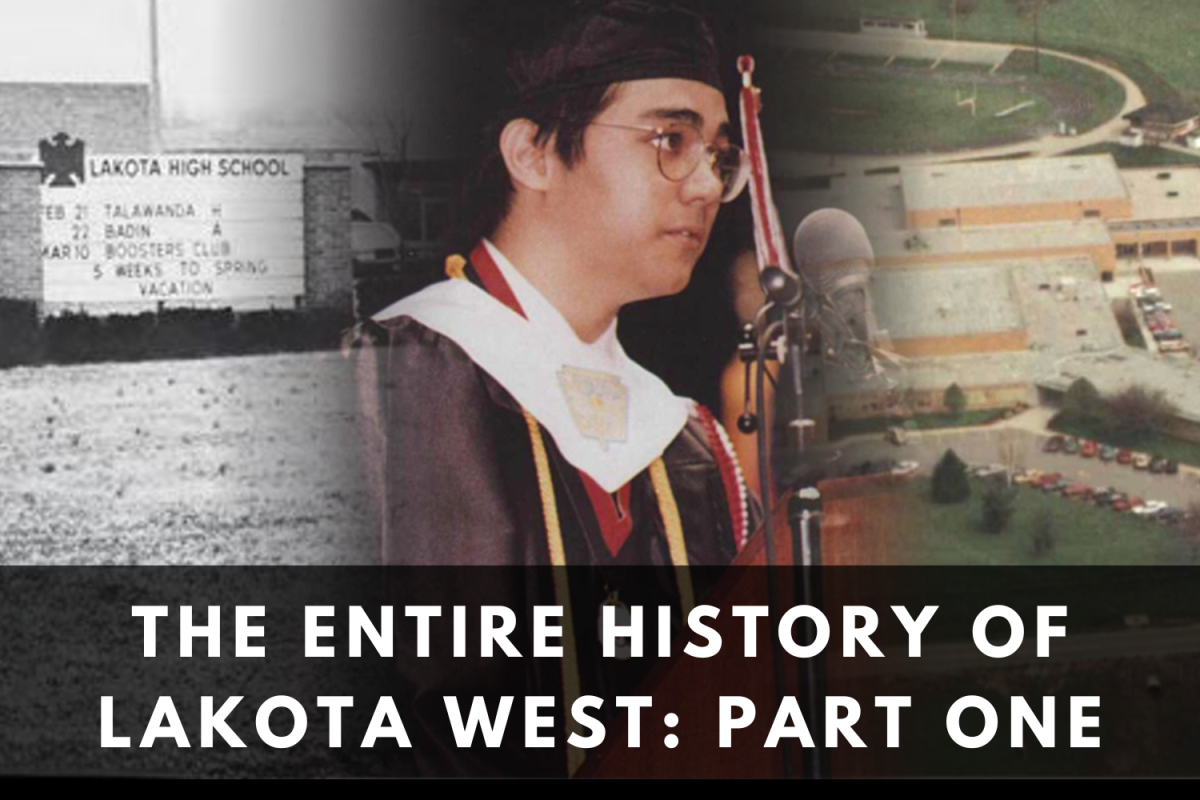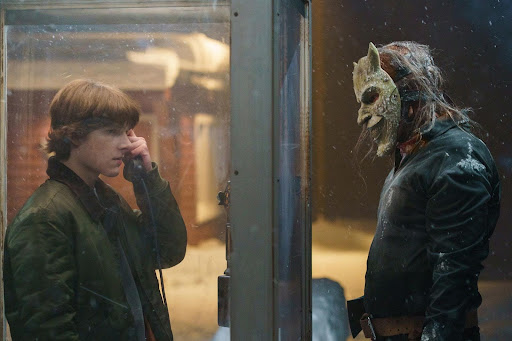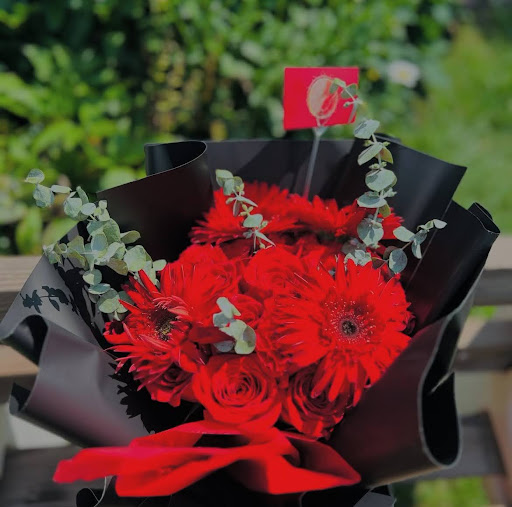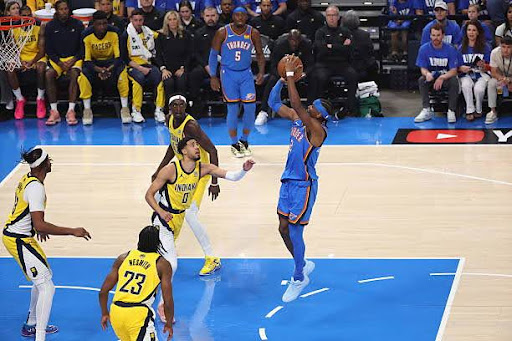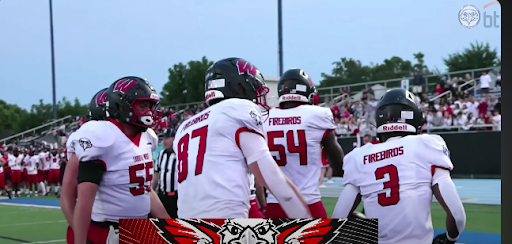Welcome to PART ONE of the Entire History of Lakota West High School!
My journey through the history of both the Lakota Local School District and Lakota West High School was no simple trek; nearly 40 hours were poured into going through each individual yearbook, spanning from 1963 to 2024. Opening in 1959, Lakota High School consisted of just 458 students, all housed in what we would refer to today as the West Freshman Building. Though considerably smaller and missing nearly 3/4ths the size it has today, LHS strived for the same things Lakota Local Schools does today: Excellence in academic achievement, education, and fostering the youth of our future.
Before I take you on this journey, which I have spent the last five months walking through, there are a few things to know about how yearbooks, Lakota Local Schools, and the research I did all came together. Whether it be the style of writing, loss of resources, or changes in tradition, there’s a lot to keep in mind about the immense time jump from 1959 to now.
The yearbooks made available for use ranged from 1963 to 2024, with 17 of those years missing from the school archives. An additional 3 yearbooks were also unable to be found for our research, those years being 1960, 1961, and 1962.
Starting in 1963, both the school environment and the yearbook’s structure looked very different from how they do today: Homecoming lacked a theme, the faculty was overwhelmingly small, and very little information about the culture and students was included in the yearbooks. Today, our yearbooks consist of colored photos, some small boxes of info, and the occasional statistic. In 1963, yearbooks had fewer photos, but a lot of info. Even with all of that text, there wasn’t always a lot to talk about. Yearbooks were as small as 60 pages.
Moving into the 1980s and 1990s, yearbooks had a large amount of both photos and information, making the research portion of this project unbearably time-consuming: 1997 alone took nearly three hours to go through and sort through the presented information. A typical yearbook was more than 200 pages, with a thick, large hardback cover and pages of shoutouts, promotions, interviews, stories, features, etc. The largest yearbooks during that time spanned over 250 pages.
In the early 2000s, more and more photos began to show up, with less and less text appearing (though still a massive amount). As Lakota transitioned to Lakota West and Lakota East, so did the theming of the schools: During the first few years of the schools’ opening, each saw its culture, legacy, and traditions begin to form. If there’s one thing you will be surprised by, it will be the traditions and options students used to have that we no longer have today.
By 2010 and moving into the 2020s, yearbooks became more and more difficult to research: These historical documents had seemingly transitioned into a coffee-table style picture book, featuring school events with less and less text describing them. As someone who was hoping to learn from each yearbook, these years became frustrating to read through. Some traditions, such as making 200-page yearbooks filled with information, should have stuck around, in my opinion…
All of this information was compiled, sorted, and then broken into sections with even further detail. Whether it be every prom theme, theatre production, football record, facility construction, addition, or even the principals going back as far as 1963, the research conducted was thoughtfully put together to please anyone’s interests. By the end of this paper, there is very little you won’t know about Lakota West.
The history of Lakota West also becomes the history of Lakota Schools… or should I say the Liberty-Union Local School District? Though not originally intended, this historical analysis of Lakota West High School will also detail the growth of the Lakota District, including its origins, going as far back as 1915.
Unfortunately, there is an undeniable chance that information may be incorrect. Just like me, these yearbooks were put together by students, so errors or false information may be prevalent. I have done my best to research what is true or not, such as talking to teachers who have worked here for decades, some even attending Lakota/Lakota West High School as a student. If you have a critique, change, or further information that may further this project, I invite you to leave a comment and tell your story. This project is, in a way, a time capsule of the Lakota experience; any additions or suggestions are welcome!
So, are you ready to begin this journey encapsulating the entirety of Lakota West’s and Lakota Local Schools’ history? This first part will cover the earliest days of Lakota High School and tell its story up until the school’s closure in 1997. The second part will cover the opening of Lakota West High School and its continued legacy up until today.
It’s been a rollercoaster to compile, write down, and present over 100 years’ worth of facts, stories, and traditions for you to enjoy.
So sit back, relax, and remember to take breaks: we’ve got a lot to cover.
I am beyond proud to present to you:
The Entire History of Lakota West High School.
Thomas Price, Class of 2025
Editor in Chief of The West Press
The History of the 60s and 70s
The 1960s and 1970s were defined by togetherness, competitiveness, and developing a new culture for Lakota. Opening in 1959, Lakota High School had 480 students across four grades. The building was noticeably smaller, with the modern-day cafeteria, gym, auditorium, 2nd floor, and courtyard not existing until years later. The freshman building (now Creekside Early Childhood) wasn’t built until the late 70s.
The 60s in particular were a time of firsts: the first time a musical was produced by students, the first graduating classes from Lakota, as well as a changing and newly developing culture for students. These yearbooks focused on clubs, sports, and the events that students got to experience. Little information about student life was found in these years, just stats, names, and a few photos of student gatherings. Nevertheless, these yearbooks have proven to be the most fascinating to learn from and dissect the culture and norms for high school students over 60 years ago.
**A reminder that many yearbooks weren’t made physically available to The West Press for this project, so some details for years missing have been included in the sections prior to it.
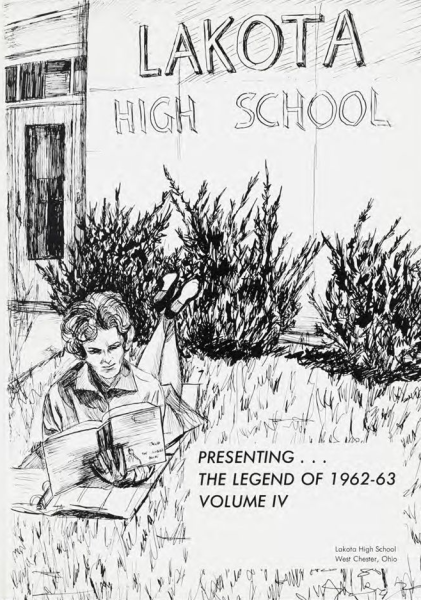 1963
1963
Principal: LeRoy Williams
Prom: “Roman Holiday”
The fourth class of Lakota High School enjoyed a variety of classes that, today, would be considered oddities and peculiar to see taught. These included General Business, Mechanical Drawing, Adult Farmer Education, Woodworking, Home Economics, and Typing. The Lakota journalism group was also known as “Drumbeat.”
Homecoming was not a celebrated dance, with other events such as the Sadie Hawkins Dance, Prom, and the Sweetheart’s Dance helping to fill out the year.
Principal LeRoy Williams would serve as principal up through the 1965 school year, and would then hand the job over to Fred S. Cover for the next two school years.
During the later months of the school year, “Ms. Lakota” would be named among a group of girls who were nominated by peers and selected by a committee. During the ceremony, the previous year’s Ms. Lakota would bestow the role onto the new Ms. Lakota. In 1963, the role was given to Carol Elizabeth Hanes.
The theatre program put on two plays, each being given by the Juniors and the Seniors. Junior actors presented “Oh Men, Oh Men,” with the seniors presenting “Stranger in the Night.”
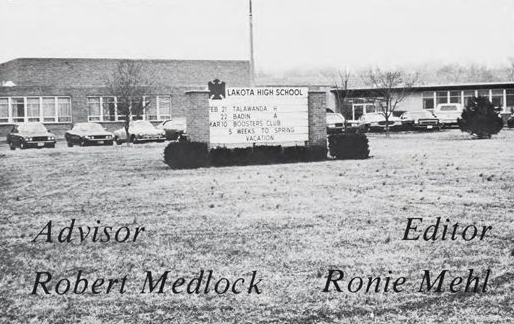 1967
1967
Principal: Fred S. Cover (1st half), George D. Estes (2nd half)
Prom: “Chateau Gillard”
During the first half of the school year, Lakota High School held its homecoming dance, as well as an all-new winter dance, called the “Winter Wonderland Ball.”
Ms. Lakota was presented to Kathy O’Donnell.
The Junior Play was “Bull in a China Shop,” and the Senior play was entitled “Youth! Spring! Love! (And the United Nations)”
Notable classes students could take in 1967 included French, Spanish, and Latin I and II, Business & Marketing Education, Accounting, and Family Living. Students also had the opportunity to join a variety of clubs, including National Honor Society (NHS), Quiz Team, Ski Club, Yearbook Club (LEGEND Yearbook), Future Teachers of America (FTA), Volleyball, Track, and Golf. Of course, classic sports like American football, basketball, and soccer were offered.
To celebrate homecoming, students could get in groups with one another and make parade floats for their “Homecoming Parade.” The group that designed the most impressive, elaborate float would earn a $15 prize, equivalent to $140 in today’s cash
1968
Principal: George Estes
Prom: “House of Jade”
The first musical of Lakota HS was held in the spring of 1968, “Oklahoma!” Across all performances, over one thousand people had the opportunity to see the performers singing on stage.
Ms. Lakota, for 1968, was presented to Carol Elizabeth Hanes, who also won in 1963. The yearbook did not provide an explanation for how she won it twice across a five-year gap, so it is entirely possible the name was mistakenly entered and not changed (likely due to copying previous years’ pages and forgetting to swap information).
Notable classes students could take included German, Problems of Democracy, and Speech & Drama. The “Problems with Democracy” class in particular would have likely raised eyebrows with the ongoing Cold War against the USSR’s communist expansion across Eastern Europe and various corners of the world.
A new slogan was introduced by the Lakota Marching Band: “We are Tops.” This slogan was inspired by their new uniforms, featuring a red/white/black cadet-style uniform.
The Lakota HS annual fall sports banquet was notably hosted by guest speaker Howard Wirty, an official in the Big 10 Football League.
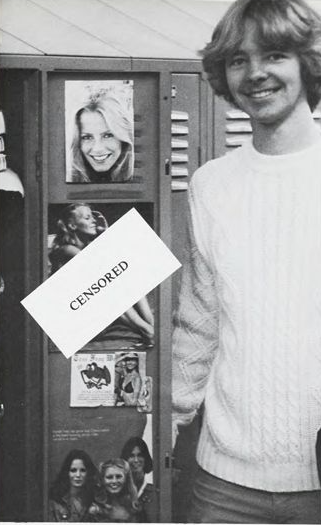 1969
1969
Principal: George Estes
Prom: “Hawaiian Style”
The musical production for this year was “Carousel,” a production that Lakota would continue to perform throughout the following decades.
Miss Lakota 1969 was presented to Dottie Baumann.
German Club and Astronomy Club were both introduced as options for students to add to their extracurricular schedules.
1970
Principal: George Estes
Prom: “Gone With The Wind”
The musical production for this year was “Music Man.”
Miss Lakota 1970 was presented to Debbie Miller.
Also in 1970, the Liberty-Union Local School District was officially renamed to the Lakota Local School District.
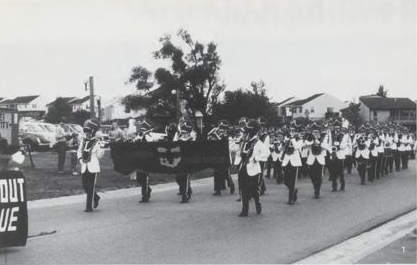 1974
1974
Principal: Demery H. Smith
Prom: Unknown
The musical production for this year was “Guys and Dolls.”
New classrooms, art rooms, an auditorium, and a gym were all additions to be found at Lakota High School. This expanded the back area of the building and allowed students to not have oversized classrooms. Teacher aides, who were students who helped volunteer for teachers and did simple tasks for them, were also introduced to help make class management easier.
Both the Gardening Club and the Bike Club were introduced.
During some time between 1970 and 1973, Miss Lakota was phased out, and floats were no longer created as part of the annual homecoming week celebrations.
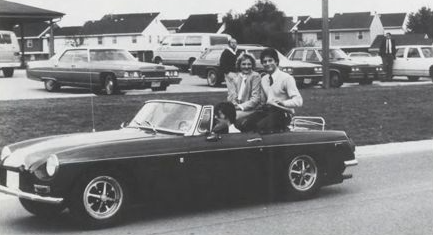 1975
1975
Principal: Demery H. Smith
Prom: “For the Good Times”
This year, the school put on the musical “LI’L ABNER” and the comedy play, “The Man Who Came to Dinner.”
This year was noted for being a very trying time for students, mainly caused by the start of the Vietnam War. Both students and teachers were concerned that senior boys over the age of 18 would be sent off to fight; staff described students as being “very rebellious.”
Advanced classes, which were meant to be a step up for students who felt unchallenged in their current classes, were introduced.
The Lakota Band Program had many notable achievements this year. Besides getting new uniforms for their 152-member marching band (the largest group at the time), the concert band decided to attempt the impossible: breaking a world record. Directed by Mr. Noggle, the top Lakota Band went to the stage at 3:20 after school one day, and began to play “Pink Panther,” repeating the piece over and over. The band performed the piece through the night, passing 11:00 a.m. the next day and setting the world record for a band playing the longest, nonstop. Their 20-hour musical crusade was recognized by the United States Congress and put on the Congressional Record.
Additional Information: In 1976, Principal Demery H. Smith resigned, and the position was filled by Larry Irwin, who would serve through the rest of the 70s and into the 80s.
In 1977, the new Lakota Freshman Building (today Creekside Early Childhood) opened, as well as the media center and courtyard being added to Lakota High School. The lunch hall, which would connect the two buildings, did not exist; this meant some students would walk back and forth between the buildings, dealing with the ever-changing weather of Southwest Ohio.
1978
Principal: Larry Irwin
Prom: Unknown
The musical production for this year was “West Side Story,” and the play was the 1938 classic, “Our Town.”
Sometime between 1975 and 1977, homecoming floats made a return to Lakota HS, and were featured once again in the yearbook.
Miss Lakota was reintroduced alongside the brand new “Mr. Lakota” title, which was given to a couple in the form of a dance. Different couples would be nominated, and a committee would choose who the new Mr. and Miss Lakota would be. In 1978, Beth Hall was named Miss Lakota, and Chris Coffing was named Mr. Lakota.
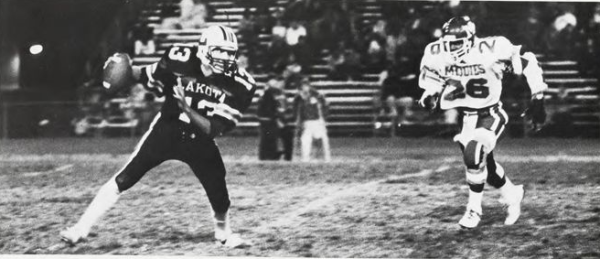 1979 – “The Last of the 70’s”
1979 – “The Last of the 70’s”
You might have noticed this yearbook had a title! Though short-lived, this would be the first time a yearbook had a title or theme to which the yearbook would orient itself. The next time a theme/title would be introduced wouldn’t be until 1985.
Principal: Larry Irwin
Prom: “Always and Forever”
The musical show for this school year was “Once Upon a Mattress,” and a production of “Flowers for Algernon.”
The homecoming floats for this year were based on a theme, “commercials.” Different brands, such as P&G’s “Tide,” made their way into giant floats for the parade.
The Lakota football team put an end to Monroe’s 18-year winning streak against them, settling an arch-rivalry that had been brewing for nearly two decades.
The 2nd annual Mr/Miss Lakota Dance was held, with Mark Vaccariella being named Mr. Lakota, and Dana Schurenburg being named Miss Lakota.
The History of the 80s and the End of Lakota HS
The 1980s introduced a new culture for students at Lakota. Friendships became family, strangers became peers, and teachers became valued mentors. Students began to expand on their hobbies, introducing a spree of new clubs, as well as becoming more engrossed in the arts and sports programs Lakota offered.
Entering the 90s, Lakota had finally hit its golden years, with growing class sizes and reliable staffing to make the district a great place to be. Aside from recognition and visits from notable members of the United States Government and the Board of Education, Lakota had built a name for itself and broken the expectations of any district around them. The culture and values of Lakota couldn’t have been stronger; what could possibly change that would strip all of that away?
In the winter months of 1994, voters decided to split the Lakota District into two. The final years of Lakota High School were bittersweet, and as you will read, you’ll see how students made the most of it and embodied the Lakota spirit even through the new challenges and opportunities thrown their way. The energy of Lakota High School in the 1980s and 90s was undeniable, and the spirit of students and staff had never been higher.
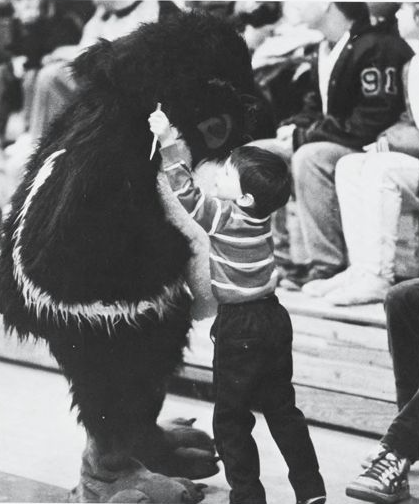 1980
1980
Principal: Larry Irwin
Prom: “Memories of The Way We Were”
The play for this year was “Heaven Can Wait,” and the musical was “Fiddler on the Roof.”
School began on September 6th, 1979. Because school started so late as compared to today’s standards, graduation and the last day of school bled into the early weeks of June.
A brand new “Smoking Pit Advisory Committee” allowed students of Lakota High School to smoke on school grounds, but only in a specified location. Though the district allowed this, warnings of the dangers of smoking were echoed throughout the designated smoking area, as well as in classrooms around the school.
1981
Principal: Larry Irwin
Prom: “I Wish You Peace”
The musical production for this year was “Carousel.” The drama for this year was “The Miracle Worker.”
The Mr. and Miss Lakota dance was held once again, with Karl Lehman named Mr. Lakota and Tana Preston named Miss Lakota.
More clubs were mentioned in this yearbook that went unmentioned beforehand: Math Club, Mu Alpha Theta, “It’s Academic,” Trivia Club, Chess Club, and the WLHS Radio Club. The radio club was run throughout the year during school hours, playing music and sharing local news for the Butler County area. This station would continue to be run by students for decades to come.
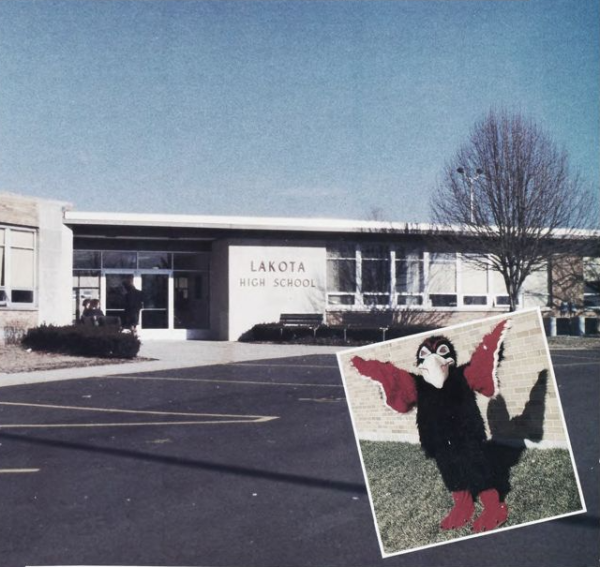 1982
1982
Principal: Larry Irwin
Prom: Unknown
The musical production for this year was “Anything Goes.”
During this school year, many board members and notable staff members for Lakota Schools retired. A group of Lakota Board Members resigned on December 31st, 1981, for no clear reason, and Lakota HS Principal Larry Irwin announced he would be leaving to work for another district at the end of the year. The resignations don’t seem to have any specific cause; likely just a board member wishing to leave, and others following suit because they wanted to end on a high note. This could be a very plausible explanation for why Irwin would resign at the end of the year to work at another school.
1983
Principal: Ebbie Gadd
Prom: Unknown
The drama for this year was “Butterflies Are Free,” and the musical was “My Fair Lady.”
For the first time, a Homecoming theme was introduced: “Catch the T-Bird Spirit.”
More clubs were introduced, such as Friendship Connection, Conflict Simulation (mock historical battles and their tactics), and the Lakota Cultural Exchange group.
This year saw changes to the Lakota grading scale. For context, exams used to be worth 20% of students’ final grades! The grading scale also used to be much harsher, and fewer kids saw A’s compared to today’s field of education.
Plans were introduced to expand the school library by 1200 square feet, as well as build more onto the gym. These would not be finished until the following school year.
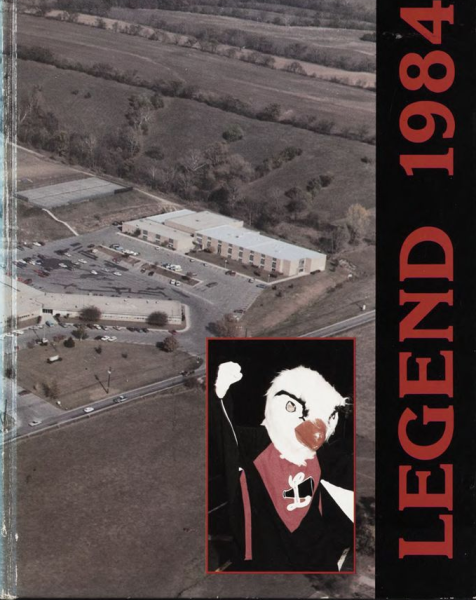
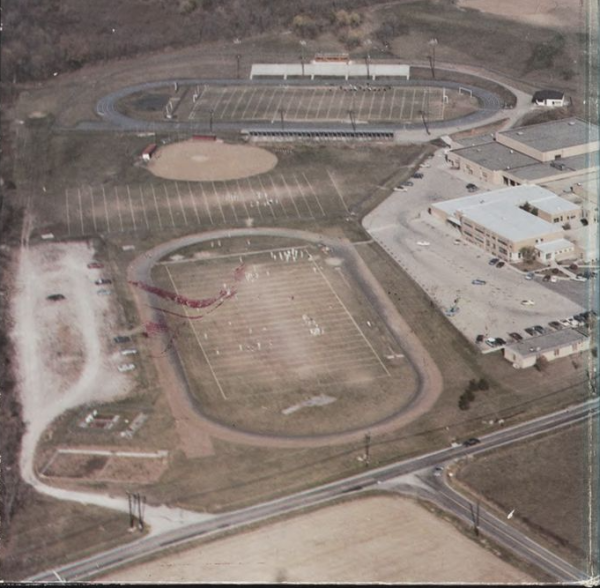 1985 – “Pride”
1985 – “Pride”
Principal: Robert/Bob Oglesbee
Prom: Unknown
The theatre productions from this year were notable repeats of previous years. The play was “Our Town,” which had been last performed just seven years earlier in 1978. The musical, “Music Man,” was last performed in 1970.
A large new club, known as the “Students Against Drunk Drivers” group, was introduced for students. The club gained massive attention and helped make both the students and Lakota community more aware of the dangers of driving under the influence.
1986 – “Get Ready for the World”
Principal: Robert/Bob Oglesbee
Prom: “The Bet is Yet to Come”
The musical production for this year was “Once Upon a Mattress,” and the play was “Harvey.”
The Lakota Band was given the opportunity to premiere a newly written piece, entitled “Renaissance Dances” by Dr. Robert Rollin, during their first concert of the year.
Six students who were taking Spanish classes were able to visit Spain and parts of Africa during a school-sponsored trip.
The class of 1986 featured 453 graduating students.
Before Homecoming, a bonfire was hosted for the first time, acting as a form of tailgating for students to hang out around. Years later, students would create a doll designed around the rival teams’ mascot, such as the Fairfield Indian in 1989. These dolls would be tossed into the fire as students cheered for their defeat; the local fire department was present to monitor the fire and prevent any injuries.
1987 – “A Legend of Its Own”
Principal: Robert/Bob Oglesbee
Prom: “Hold on to Your Dreams”
Homecoming: “Together as One We’ll Stand”
Two musical productions were put on this year: “Fiddler on the Roof” and “Guys and Dolls.”
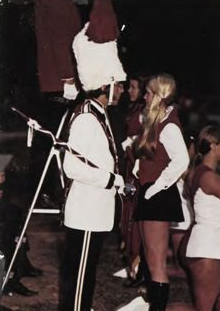 1989 – “The Sky’s The Limit”
1989 – “The Sky’s The Limit”
Principal: Eileen Goode
Prom: Unknown
Homecoming: “Dreams” (themed around the song “Dreams” by Van Halen)
The musical production for this year was “Little Shop of Horrors.” Two plays were put on stage: the 1981 production, “Fools,” and the childhood classic, “Charlotte’s Web” (not to be mistaken with the 1988 musical production!)
School started on September 1st, 1988, and ended on June 10th, 1989. 2,772 students attended Lakota High School during the school year. To accommodate the school’s increasing student attendance, new classrooms were added, as well as a new cafeteria that would bridge the freshman building (Creekside today) and the high school (West Freshman today) together.
For homecoming at the beginning of the year, each class had the chance to decorate a hallway in the school to a selected theme, and go ALL-OUT with the decorations. The seniors got to decorate the main hallway as a jungle, Juniors themed around crazy hats, sophomores with a “60’s characters” theme, and freshmen based on Hollywood stars. The seniors, of course, came out on top and won the competition for best-decorated.
Homecoming was celebrated in the new cafeteria connecting the two schools, as it provided a large enough space for students and didn’t require any space to be rented.
Greg Snyder was hired as the new Lakota Band Director and would serve for multiple decades until his resignation in 2014. Under his direction, the Lakota Marching Band played in the 1988 Reds Opening Day Parade to kick off their season.
Lakota High School was honored to have the 2nd Lady (wife of the Vice President), Marilyn Quayle, visit the high school, where she spoke to government classes, as well as the Lakota peer counselors for their anti-drug efforts in the school. She also spoke to the principal about drug prevention in classrooms. Quayle’s visit was due to a video created by the peer counseling group entitled “A Room With a View,” likely a play on the 1908 novel of the same title. The short play was about life using drugs and how it can affect your day-to-day activities. Lakota also conducted a survey and found that 5th-grade classrooms were 90% drug-free… a statistic that, although it is low and generally positive, can still be frightening to think about today.
Seniors helped put together a “Senior Benefit Ball,” which was hosted in the gym lobby. Unlike most dances, participants danced barefoot; Over $430 was raised ($1100 today), which was donated to various scholarships.
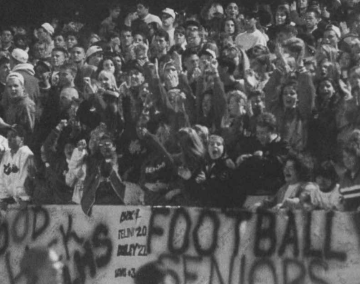 1993 – “Making Big Impressions”
1993 – “Making Big Impressions”
Principal: Craig Ullery
Prom: “A Time to Remember” (based on Billy Joel’s song, “This is the Time”)
Homecoming: At This Moment
The musical production for this year was a romance/comedy entitled “A Funny Thing Happened on the Way to the Forum.” They also performed a brand new musical in the fall semester, which had been released just one year prior: “Scrooge.”
Late arrival, known as “Senior Flex” today, was introduced for eligible seniors. They had the privilege of arriving at school one bell after the typical school day began.
New student section chants were introduced with each passing year, such as “T-birds are rockin’ the house,” and “L…A…K… O-T-A, LAKOTA.”
Lakota High School’s newspaper was rebranded to the name “Spark.” The mastermind behind the renaming was journalism student Alyson Baker.
The Lakota Chorale took a trip to perform in Carnegie Hall, one of the most famous concert venues in the country. Their trip to NYC took place in February 1993.
One new chorale group introduced this year was “Cantarici,” which means “choir of all female voices.” The term comes from the Latin word “Cantator,” in its feminine plural form, which means “singer.”
The 1993 Lakota HS Prom went from 8 pm to 1 am… this was the norm for many years, until after-prom and other post-prom related events were no longer sponsored by the school in more recent years.
In 1993, Lakota decided to put on a faculty play, which consisted of a production consisting of entirely teachers managing lights, stage management, and performing. Their production that year was a 1950s musical classic, “Guys and Dolls.”
Lakota High School received the prestigious “Blue Ribbon Award” from the United States Department of Education. This award was only given to eleven secondary schools in the state of Ohio. Representatives from Lakota were invited to visit the White House in October of 1993.
1994 – “Shaping Excellence”
Principal: Craig Ullery
Prom: “Save the Best for Last” (based on the song by Vanessa Williams)
Homecoming: Remember the Night (themed around “Heaven in Your Eyes”)
The play for this year was “Steel Magnolias,” with the musical production being a Lakota classic, “Carousel.” Lakota’s faculty also put on the musical, “Li’l Abner.”
2100 students (sophomores through seniors) attended Lakota High School for the 1993-1994 school year.
For the first time in four years, the Lakota football team won its homecoming game, defeating Milford. This sent the seniors in a frenzy, who had never seen their football team win a homecoming game while in high school.
The front lawn of Lakota High School was made into the now-familiar parking spaces for seniors to use. This also meant parking numbers were introduced. Juniors had to park in the gravel lot beside the school, while seniors got to park in the new concrete parking spaces right outside the main entrance.
In late October, the 4-way stop sign intersection to get into Lakota HS was changed to include traffic lights… a change that was incredibly overdue, especially for a campus with nearly 3000 people commuting daily.
The classrooms within Lakota High School were renumbered, causing upperclassmen to look “just as lost as the underclassmen on their first day of school.”
Food chains such as Taco Bell, Spooners, and McDonald’s were no longer offered to students during their lunch bells. Yes, you read that right.
The Lakota Class of 1996 was the largest the district had ever seen, with 777 sophomores.
Computerized Business Applications was also added as a class that students could take.
The Marching Band was given a new nickname, the “band-wagon,” ahead of their trip to Florida, where they performed at the Citrus Bowl. They also participated in the “Citrus Bowl Sports Competition,” where groups such as the marching band could show off their work in a typical performance setting. The band was named grand champions out of the 21 other groups there.
The Lakota Marching Band also famously created a “Script Lakota” during their pregame performance before football games.
1995 – “A Time to Remember”
Principal: Craig Ullery
Prom: “Never Say Goodbye”
Homecoming: In the Still of the Night
The drama for this year was “Dracula,” and the musical was “Damn Yankees.” To personalize the musical, students decided to replace the Washington Senators, one of the teams featured in the production, with the Cincinnati Reds. Custom uniforms were made that resembled the team’s white and red striped jerseys. The faculty also put on the musical “Oklahoma,” marking the 10th annual Lakota faculty play.
School began on August 30th, 1994, at 7:25 am. Seniors could arrive at 8:10 for their “late arrival.”
Many students decided to spend their homecoming meals at local restaurants such as Olive Garden, or the local White House (no, not the U.S.A. White House!)
Based on a LHS student survey, the Legend Yearbook staff found that the average student would spend $20 each month on CDs, tapes, or records. With 240 dollars spent in a single year, that would be just short of 500 dollars in today’s value. That would be like buying Spotify Premium (11.99 per month) for three and a half years, every single year.
The Lakota Chorale took a trip to Washington, D.C., for the 50th anniversary of the “Allied Liberation of the World.” This celebration was based on the defeat of Japan and Germany 50 years earlier, marking the end of WWII. The trip took place in June of 1995.
The Spark newspaper was awarded the “Best of Show Award” from the National Scholastic Press Association (NSPA). Student representatives of Spark raised money to fly down and accept the award in Dallas.
Lakota’s sports programs (women’s sports in particular) had a notably successful year. The boys soccer team went undefeated in the GMC, the women’s volleyball team and girls golf team both won state, and the girls basketball team tied for GMC Champion.
The Lakota Class of 1995 featured 600 graduating seniors.
 1996 – “Some Things Speak for Themselves”
1996 – “Some Things Speak for Themselves”
Principal: Craig Ullery
Prom: “Remember Me This Way” (from the 1995 movie “Casper”)
Homecoming: “These are the Days”
The musical production for this year was “Fiddler on the Roof,” and the play was “A Midsummer Night’s Dream” by Shakespeare.
The Friday before Homecoming, seniors got to participate in a pep rally exclusively for their class during the first few bells of the day. During this time, seniors had the chance to show off their “tricks” in a talent show-style performance. The event, called “Stupid Senior Tricks,” was won by Matt Plaotje, who swallowed a goldfish in front of the student body.
At the beginning of the year, two levies proposed by the district failed, which resulted in budget cuts being made across the district. Various clubs within LHS were shut down due to a lack of funding for their equipment or events, as well as paying teachers to be club monitors.
650 seniors graduated from the Lakota High School Class of 1996.
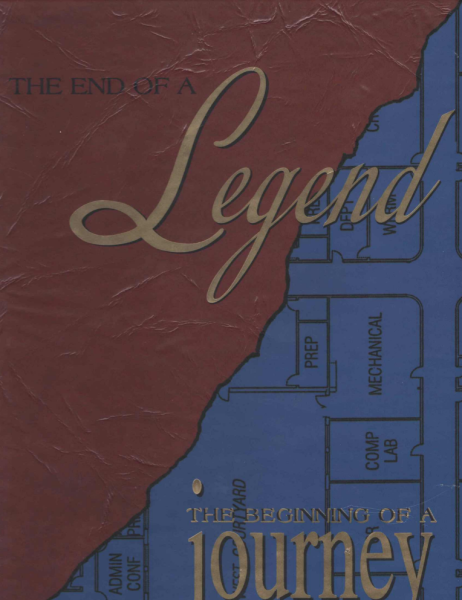 1997 – “The End of a Legend – The Beginning of a Journey”
1997 – “The End of a Legend – The Beginning of a Journey”
Principal (soon-to-be West Principal): Craig Ullery
Assistant Principal (soon-to-be East Principal): Ruth Barber
Prom: “Wonderful Night” (based on the song by Eric Clapton)
Homecoming: “We’ve got Tonight” (based on the song by Kenny Rogers)
The musical production for this year was “Little Shop of Horrors,” and the play was “Inherit the Wind.” The play received slight backlash from students and faculty, as it focused on whether schools should teach about religious beliefs or scientific facts.
The 1996-1997 school year marked the final time all Lakota students would be under the same roof for high school. This was the final year before Lakota split into two sides: East and West. On a snowy day in February 1994, those living in the West Chester and Liberty Township areas voted to split the district into two to accommodate growing student attendance. With the vote passed, construction began in 1996 and ended shortly before the first day of school for the 1997 school year. These new schools introduced many advantages and new technologies that the old building did not: for one, air conditioning could be found within the new schools. Ann Johnson, a teacher at Lakota High School, said she would “miss” the 100+ degree weather in the summer/late spring months, and ants getting everywhere in her classroom.
Students could look forward to new and improved technology, such as a small computer lab, a better announcement sound system, and larger bathrooms.
The Lakota HS Yearbook, called “Legend,” announced they would retire the name alongside the school’s split. The name for the final yearbook, “The End of a Legend – The Beginning of a Journey,” helped signify both the end of the Legend yearbook, as well as the actual legacy that had been built inside the halls of LHS. What had transpired over the last 38 years had been nothing short of legendary to the tens of thousands of students and staff who attended the school.
LHS Principal Craig Ullery would become the new principal at Lakota West, and LHS Assistant Principal Ruth Barber. Even a year before the split officially happened, it wasn’t uncommon to hear banter between the two about which side of the district was better. Common terms we hear today originated from their bickering, such as “West is Best” and “East is the Beast!”
When asked what advice West Principal Craig Ullery would give to East Principal Ruth Barber, Ullery joked with her and said, “Don’t call me; you’re on your own.”
Each principal had to double up on work, both managing the current school and the new building. Along with managing the reorganization of staff between the two sides, each principal took students and teachers on tours of the new buildings. Teachers got to see the construction in the fall of 1996, whereas students got to visit later in the school year.
The beginning of the year also meant celebrating the final first day of school. Teachers received pens reading “The Farewell Tour,” and the LHS Class of 1997 received shirts reading “‘95 fired it up, ‘96 tore it, and ‘97s gonna close it down.”
Teachers also had to make a difficult choice: Do you teach at West or East High School next year? Although teachers were supposed to be assigned, the principals decided to let teachers with the most experience have the first pick on where they ended up. They continued to work their way down to the newest teachers, allowing almost every single staff member to choose which building they taught at. This decision was influenced by how close they lived, and other staff members’ choices (since many had become close friends over decades of teaching!)
Back in the day, yearbooks were almost entirely black and white: only the first few pages and the senior photos were printed in color. Entering the late 90s and early 2000s, more colored pages began to appear. 1997 marked the first time additional color pages were added since their first introduction many years prior.
One thing the yearbook focused on was debunking the idea that Lakota High School was “preppy.” Many pages were used to show the variety of students’ interests, cultures, lifestyles, and hobbies that made everyone unique. Any possible belief that LHS was preppy could be defeated, “as evidenced by one look at the entire Lakota student body.”
At sporting events, it wasn’t uncommon to hear not only cheers and yelling, but also airhorns that students would sneak into games. It wasn’t uncommon to find students at the local Perkins or Frisch’s after big games at LHS. Students over the age of 18 could be found clubbing at places such as Zauo’s.
Each morning, students had the option to buy donuts from the DECA (Distributive Education Clubs of America) club, which fundraised each year for a new trip. In 1997, they travelled to Chicago.
To end their final season, the 225-member Lakota Marching Band decided to compete in a Bands of America competition, hosted in Cincinnati. BOA is a national marching band circuit where the best of the best perform; today, both Lakota East and West are regular BOA competitors. The band placed just outside of finals, placing 11th overall.
1997 also marked the first time K9 drug dogs were brought into the school to look for illegal substances. Students said it was unexpected and “caught everyone off guard.”
To end the final Lakota High School yearbook, two sections were introduced. The first was titled “Remember When…” and allowed students to recount funny memories they made with their peers. Students went all out, throwing shade to their exes, teachers, or just remembering funny moments with their friends.
“Remember when the Lakota MB took their trip to Florida and had to go 2 days on buses without showers? Talk about togetherness.” -Unknown
“Remember when I walked out of my house at 3:00 in the morning and saw a dead possum on my windshield?” -Colleen Rutherford
Students also got to “will” things down to juniors, such as specific items, jobs, or traditions.
The Sadie Hawkins dance was also brought back in the early months of 1997 for students to enjoy one last time.
Lakota Senior Zach Stamp had the privilege of giving the final speech at the Lakota Class of 1997 graduation: the final words of LHS. The speech was a self-authored Benediction, or a prayer of thanks.
The yearbook ended with the poem, “Till We Meet Again,” written by Lakota Senior Brian Profitt.
The 1997 yearbook, the last of Lakota High School, also featured a large variety of facts about the district, the building, and the culture of the students over the years.
- In 1959, the students of LHS chose the thunderbird to be the school mascot, and the school colors to be black and white. In either 1962 or 1963, Gene Neff, a member of the Lakota HS Administration, decided to include a red stripe to “add more flair.”
- In the building’s first year, LHS had 480 students in attendance across four grades. In 1997, across just three grades, LHS had over 2500 students. (Now, imagine that number of kids at Lakota West Freshman today… an expansion was definitely the right call!)
- When Lakota High School was being built, massive amounts of rain caused the basement of the building to flood. Rumor is that the state senator took his “horse for a swim” while the water still filled the pit.
- Also during construction, severe flooding caused the surrounding terrain of the building to become muddy, causing a Caterpillar (heavy-duty construction machinery) to sink into the mud-filled basement. The person operating the vehicle managed to get out “just before it was too late.”
- The first class of Union HS (the original Lakota High School) in 1915 graduated just 3 students.
- The first basketball team of Union HS also had to get crafty with their transportation to and from away games. To compete, the team not only purchased all of their equipment, but also rode a cattle cart to distant schools for games.
- At some point between 1995 and 1997, three students from different neighboring schools decided to enter the doors of Lakota High School without staff knowing. Once they found out, the principals of LHS chased the students in their vehicles down Tylersville Road.
Don’t forget to use the links below and check out “The Entire History of Lakota West High School PART TWO.” In part two, you’ll learn about the opening of Lakota West High School and how it has grown into the school it is today!

